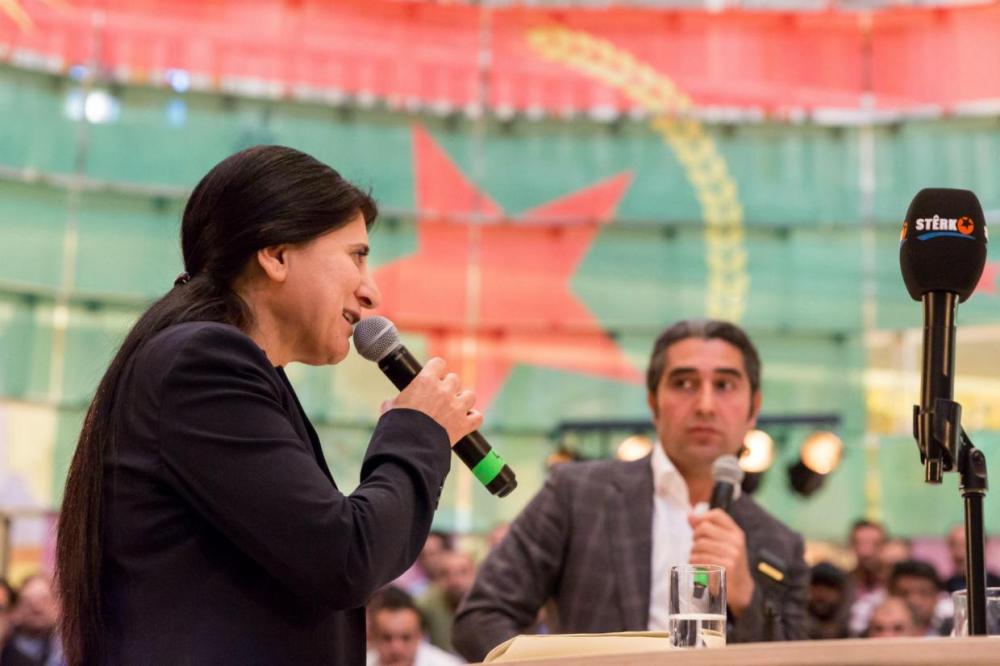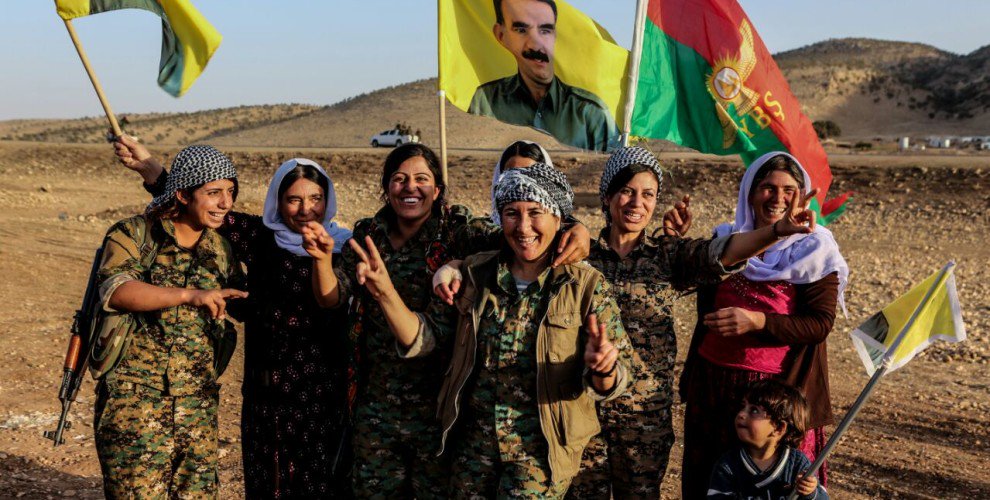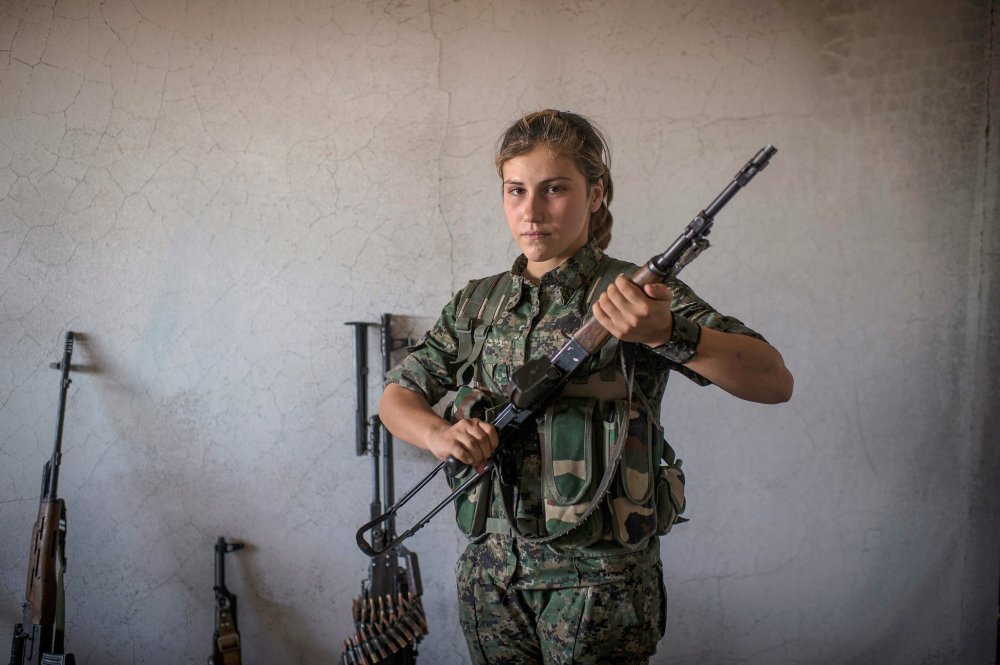Asya Abdullah is a 46-year old woman from the town of Derika Hemko in Syria, and has taken an active role in fighting for the Kurdish movement as well as working for democracy and keeping women’s rights at the forefront of her agenda. She is the co-chair of the Democratic Union Party with Saleh Muslim, but has in the past been forced into hiding from Assad’s regime because of her role as an activist (PYD Co-Chair Asya Abdullah: A Women Revolution). According to The Independent, she is the “leader of the most revolutionary women’s rights movement in the world” (McKernan). Abdullah is both an activist for the Kurdish as well as for women, working to build a communal society in the hopes that it will serve as a model for the society that is rebuilt when the civil war in Syria comes to an end.


The experiment she is apart of is known as the Rojava experiment, and is a society made up of Assyrian, Arab, and Kurdish populations. Rojava means Western Kurdistan (YPJ: Women’s Protection Units) and can be interpreted “land where the sun sets” (Enzinna). It is not recognized as an autonomous state by Assad, the UN, or NATO, but has subverted the rules of the surrounding territories dominated by ISIS (Enzinna). This society has women’s emancipation as one of their main goals, and has banned underage marriage and made sure that there is equal representation among women and ethnic groups (Mckernan). Women also have equal standing in property law, and Rojava’s Constitution holds that gender equality and religious freedom are crucial rights for all. Rojava also focuses on environmental health and self governance, with their ultimate goal being stateless democracy. This is the idea that “in a federalized Syria, their autonomy can be maintained on a local level, with a focus on ‘bottom up’ power and little to no interference from the state” (Mckernan). The Kurds who are often thought of as an oppressed minority group have shown to be quite powerful in a time when their country is disintegrating. They have made progress against ISIS and significantly affected the development of Syria’s war (Mckernan).

The YPJ which stands for “Women’s Protection Units” in translation, have fought to liberate towns such as Kobani and Manbij from ISIS. They are the all-female unit of the YPG, which is the military of the Syrian region of Kurdistan known as Rojava (YPJ: Women’s Protection Units). According to Abdullah, “We have the YPJ because women need their own autonomy, to prove they can do things themselves” (Mckernan). She says “ISIS [Daesh] would like to reduce women to slaves and body parts. We show them they’re wrong. We can do anything” (Asya Abdullah: An Inspiration for all Women). They are a group that has fought Assad and his army, Turkish units, and ISIS, and they are actively fighting for their rights. Their existence is nothing short of a profound statement in a place where women experience limited rights (Mckernan). As Abdullah states, “You can’t have real change without putting women at the centre” (Mckernan). Abdullah comments that this is not just something Kurdish women need to be fighting for, but that all women around the world need to be thinking about and acting on. This is a battle for all women everywhere, and something they need to become aware of (Mckernan). One story that is particularly moving and speaks to the impact that YPJ is having on people is that of Mirza and his family, who were stranded on a mountain after an attack from ISIS when the YPJ soldiers broke through ISIS lines and rescued them. Mirza commented that the battle caused him to reevaluate the way he thought of women. He stated, “Women fighters–they saved us. My society, Yazidi society, is more, let’s say, traditional. I’d never thought of women as leaders, as heroes, before” (Enzinna). Mirza went on to study in Rojava and said that in one text they studied it talked about how issues of corrupt government and unstable democratic establishments in the Middle East needed equal rights for women in order to solve these issues (Mckernan). All this to say, Abdullah’s political efforts to elevate women to an equal status with equal power have been physically embodied in the YPJ as these women fight everyday for both their equal rights and the equal rights of their people.


The following is an excerpt from Abdullah’s speech in Moscow:
“We discussed the potential changes to occur in the Middle East. One of these important changes is the Kurdish question. Without solving the Kurdish question in the Middle East, no stability will occur for the region. We discussed the Astana and Geneva talks. Currently, there is no clear project for finding a solution for the instability in the region, neither by the super powers nor by the parties attending these conferences. However, we as Kurds criticize the efforts being made to exclude us from these talks. We criticize excluding the forces fighting terrorism in northern Syria. As a strategic player is excluded, this means there is no project for finding a solution. So the conflicts and instability will continue. The Federalism of Northern Syria can find solutions for the conflict and crisis in the country. It’s a successful experience. In this domain, we are making many efforts. We are meeting representatives of the active forces and regional powers. We hope the talks end with good solutions and successful results. We hope all conflicting parties reach an agreement to end the crisis” (Asya Abdullah, PYD co-chair-Moscow).
Here, Abdullah speaks for the Kurds and their desire to not be left out of the conversation involving Syria, as it is their home too. Because so much is thrown up in the air right now with Syria’s current state and no one knows quite how it will fall, opportunities for change have presented themselves and people like Abdullah who desire to see that change happen for both women and Kurds have risen to the challenge. She is able to look at this crisis and see and feel the horrendous tragedy of it all, but also recognize an opportunity to alter the way Syria has done things and actively strive to rebuild a better one from the ashes.
The Flowers of Rojava
By: Morgan Erickson
Works Cited
“Asya Abdullah: An Inspiration for all Women.” Strive News, 17 Jan., strivewomen.org/asya-abdullah-inspiration-women/. Accessed 22 Oct. 2017.
“Asya Abdullah, PYD co-chair-Moscow,” Youtube, Kurdistan24, 18 Feb. 2017, http://www.youtube.com/watch?v=kIcjRVfmMf4
Enzinna, Wes. “A Dream of Secular Utopia in Isis’ Backyard.” NY Times, 24 nov. 2015, nytimes.com/2015/11/29/magazine/a-dream-of-utopia-in-hell.html. Accessed 22 Oct. 2017.
Mckernan, Bethan. “The Kurdish Woman Building a Feminist Democracy and Fighting Isis at the Same Time.” The Independent, 5 Jan. 2015, www.independent.co.uk/news/world/middle-east/kurdish-woman-building-feminist-democrac-fighting-isis-at-the-same-time-syria-kurdistan-rojava-new-a7487151.html. Accessed 22 Oct. 2017.
“PYD Co-Chair Asya Abdullah: A Women Revolution.” Anfnews, 27 Oct. 2012, anfenglish.com/news/pyd-co-chair-asya-abdullah-a-women-revolution-6230. Accessed 22 Oct. 2017.
“YPJ: Women’s Protection Units.” The Kurdish Project, thekurdishproject.org/history-and-culture/kurdish-women/ypj/. Accessed 14 Nov. 2017.
2 Comments Add yours